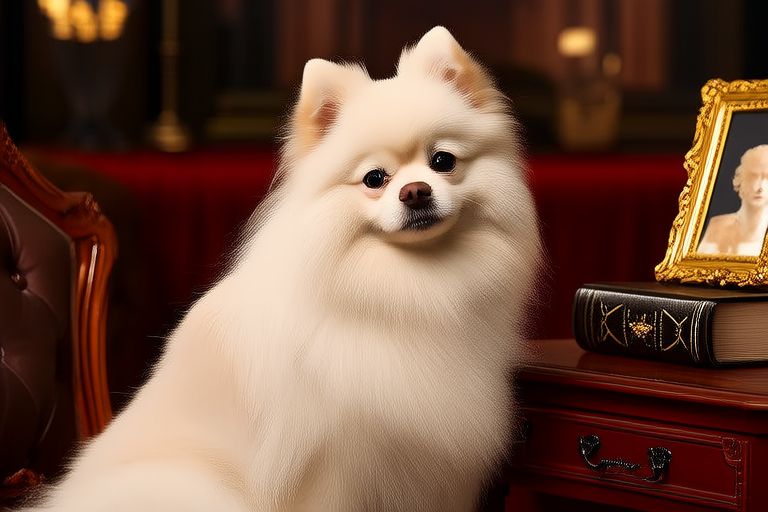The Evolution of Pomeranians: From Royal Working Dogs to Internet Sensations
The Pomeranian, a breed known for its small size and vibrant coat, has a rich history that spans centuries. Originating from the region of Pomerania in Central Europe, these dogs were once much larger and served as working dogs in royal courts. Over time, they have undergone significant transformations in size, appearance, and role, becoming cherished companions and internet stars. This article explores the evolution of Pomeranians, highlighting key historical figures, pivotal moments, and their cultural impact.
Origins and Early History
Pomeranians trace their roots back to spitz-type dogs from the Arctic regions. These early ancestors were larger and more robust, used for herding sheep and protecting livestock. They were also valued for their loyalty and intelligence, making them ideal companions for royalty. The breed’s name is derived from the region of Pomerania, where it was refined and developed. During the Middle Ages, Pomeranians were often seen accompanying nobility and royalty.
Key Historical Figures and Their Pomeranians
Several notable historical figures owned Pomeranians, contributing to the breed’s popularity. One of the most famous owners was Queen Victoria of England. She played a crucial role in the breed’s development by selecting smaller specimens and promoting them at dog shows. Her passion for Pomeranians helped establish the breed’s reputation as a fashionable pet among the upper classes. Another prominent owner was Marie Antoinette, who kept Pomeranians at Versailles. Her dogs were well-known for their luxurious coats and elegant demeanor.
Significant Changes in Breed Size and Characteristics
The most striking change in Pomeranians over time has been their reduction in size. Originally weighing around 30 pounds, they have shrunk to their current average weight of about seven pounds. This transformation began in the late 18th century when breeders started selecting smaller individuals for breeding. The breed’s diminutive stature made them more suitable as lapdogs and companions. Additionally, their coats have become more varied and vibrant, with colors ranging from black and white to red and orange. Their alert and playful nature remains unchanged, though, making them delightful pets.
Pivotal Moments in Pomeranian History
A few pivotal moments stand out in the history of Pomeranians. The first official Pomeranian show took place in 1870 in England, marking the beginning of organized breeding and competition. In 1888, the breed was officially recognized by the American Kennel Club (AKC), further solidifying its status as a popular breed. Another significant event occurred in 1912 when a Pomeranian named Prince Pomeranian won Best in Show at the Westminster Kennel Club Dog Show. This victory cemented the breed’s reputation as one of the finest in the canine world.
Rise in Social Media Popularity
In recent years, Pomeranians have gained immense popularity on social media platforms. Their small size, expressive faces, and charming personalities make them ideal subjects for viral videos and photos. Many influencers and celebrities own Pomeranians, further boosting their appeal. For instance, Paris Hilton’s Pomeranian, Tinkerbell, became an internet sensation, appearing in numerous photo shoots and reality TV shows. The breed’s presence on social media has contributed to its enduring popularity and widespread recognition.
Temperament and Health Considerations
Pomeranians are known for their lively and affectionate nature. They are highly intelligent and quick learners, making them easy to train. However, they can also be stubborn and independent, requiring consistent and positive reinforcement training methods. Despite their small size, Pomeranians are brave and protective, often barking at strangers or perceived threats. This trait makes them excellent watchdogs but can sometimes lead to excessive barking if not properly managed.
Health considerations are important for Pomeranians. They are prone to certain genetic conditions, including luxating patella (dislocation of the kneecap) and tracheal collapse. Regular veterinary check-ups and proper care can help prevent or manage these issues. Additionally, their long, fine coats require frequent grooming to prevent matting and tangling. Owners should brush their Pomeranians’ fur several times a week and provide regular baths to keep their coats healthy and shiny.
Adaptation to Modern Living
Pomeranians have adapted well to modern living, thriving in both urban and suburban environments. Their small size makes them ideal for apartment living, and their active nature ensures they enjoy regular walks and playtime. Many Pomeranians participate in agility trials, obedience competitions, and other canine sports, showcasing their versatility and athleticism. Their adaptability and charm have made them popular choices for families, singles, and senior citizens alike.
Cultural Impact of Famous Pomeranians
Famous Pomeranians have left a lasting cultural impact throughout history. Besides Queen Victoria and Marie Antoinette, other notable owners include Empress Josephine Bonaparte and Emperor Napoleon III. Their presence in royal courts and high society elevated the breed’s status and influenced fashion trends. Today, Pomeranians continue to inspire designers, artists, and filmmakers. Their image has been featured in numerous advertisements, movies, and television shows, further cementing their place in popular culture.
In conclusion, the evolution of Pomeranians from working dogs to beloved companions is a testament to their adaptability and charm. Their journey from the royal courts of Europe to the internet age is marked by significant changes in size, appearance, and role. Pomeranians have captured the hearts of many with their lively personalities, expressive faces, and vibrant coats. As they continue to thrive in modern living, their enduring popularity ensures they will remain a cherished part of our lives for generations to come.
